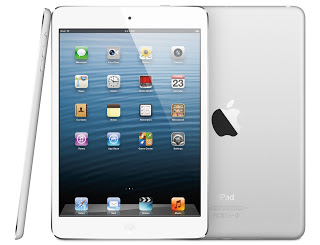My biggest complaint with the original iPad Mini was its weak display. Go ahead. Call me a snoot. But after years of living in a pixel-free world, the old iPad Mini’s screen looked too grainy for me to properly enjoy it. It’s the primary reason why I thought Google’s new Nexus 7 was better than the iPad Mini this summer.
The iPad’s biggest advantage over the competition is its app selection. As good as its two biggest rivals, the Kindle Fire HDX and Nexus 7, may be, those devices simply don’t have as many good tablet-optimized apps as the iPad does. The Google Play Store for Android apps is full of great software, but most of it is designed for smaller screen smartphones. Developers are much more active on the iPad, which means you can get versions of your favorite apps that take full advantage of 8-inch+ screens.
Hark, Leonard Read fans! Take heart, disillusioned entrepreneurs! The iPad is a wonder of capitalism just like the pencil. And contrasting a pencil – seemingly simple, but used far less in our digital age – with an iPad reminds us that the collaboration that made possible the manufacture of old tools still works the same way today.
Watching video on the iPad Air is also a noticeable improvement from doing so on smaller displays. The screen size isn’t much bigger, but as it is with reading ebooks, it’s big enough to make a world of difference.
This past week I’ve been using the iPad Air with the ZAGGkeys Folio keyboard almost exclusively for my work, and it’s been great. The combo is as thin as can be, and the combined weight is very light. I can slip it into a pocket on almost any bag without noticing it when I carry it around.
An iPad and a pencil aren’t that different, after all. As the ad notes, both can “start a poem or finish a symphony;” both are “extremely simple and yet extremely powerful.” And just as importantly, the process of making each of these items hinges on the expertise of many parties, working independently of one another to advance their own interests.
